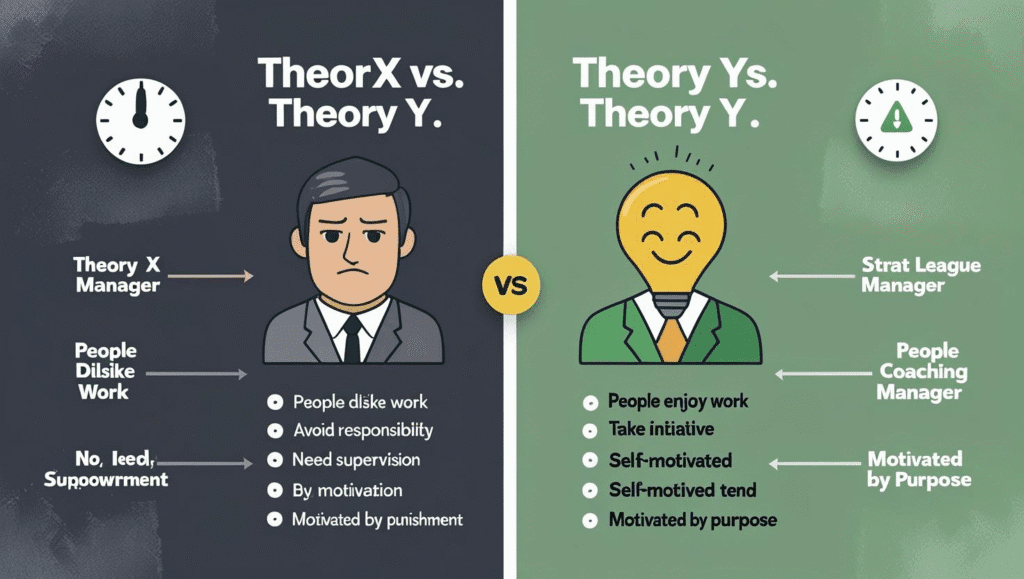Beyond the Paycheck: How to Motivate Employees Without Financial Incentives
In the quest for a productive and dedicated workforce, many organizations default to a simple tool: money. While fair compensation is essential, financial incentives often buy short-term compliance, not long-term commitment. True, lasting motivation—the kind that sparks innovation, fosters loyalty, and builds a resilient team—comes from a much deeper, more human place.
This guide explores the powerful, proven, and cost-effective ways to motivate your employees by focusing on what truly drives them. By tapping into intrinsic psychological needs, you can create a workplace where people are not just present, but fully engaged, passionate, and committed to collective success. Let’s look beyond the bonus and discover the real currency of motivation.
The Psychology of Intrinsic Motivation
Why do these methods work? They are grounded in decades of psychological research. Theories like Self-Determination Theory show that humans have three core psychological needs: Autonomy (control over one’s work), Competence (feeling skilled and effective), and Relatedness (feeling connected to others). When you fulfill these needs, you unlock powerful intrinsic motivation.
Six Pillars of Non-Financial Motivation
Building a highly motivated team is a continuous effort built on several key pillars. Here are the most impactful strategies you can implement.
1. Recognition and Appreciation
One of the most powerful human needs is to feel seen and valued. Recognition costs very little but yields enormous returns in morale and engagement. It must be timely, specific, and genuine.
Actionable Examples:
- Public Praise: Acknowledge specific achievements during team meetings or in a company-wide email.
- Personal Thank-Yous: A handwritten note or a sincere, direct thank-you from a leader can be incredibly impactful.
- Peer-to-Peer Recognition: Implement a system (even a simple one like a dedicated Slack channel) where colleagues can publicly thank each other.
- Symbolic Awards: “Employee of the Month” or similar awards that celebrate contributions, even without a cash prize.
2. Empowerment and Autonomy
Micromanagement is the enemy of motivation. When you empower employees with autonomy, you are demonstrating trust and confidence in their abilities. This sense of ownership is a profound driver of responsibility and creativity.
Actionable Examples:
- Flexible Work Arrangements: Offer flexibility in work hours (flextime) or location (remote/hybrid options) where possible.
- Ownership of Projects: Assign projects and let the employee decide on the ‘how’ to achieve the agreed-upon ‘what’ and ‘why’.
- Involve Them in Decisions: Ask for your team’s input on decisions that affect them, from new software tools to process improvements.
- Delegate Authority, Not Just Tasks: Give team members the authority to make decisions within their scope of work.
3. Professional Growth and Development
Ambitious employees don’t want to stand still. Investing in their growth shows that you value them as people, not just as cogs in a machine. This is a direct investment in their sense of competence and their future with the company.
Actionable Examples:
- Mentorship Programs: Pair junior employees with senior leaders to guide their career development.
- Access to Learning: Provide subscriptions to online learning platforms (like Coursera or LinkedIn Learning).
- Clear Career Paths: Work with employees to map out a clear path for advancement within the organization.
- Skill-Stretching Assignments: Give employees challenging tasks that push them just beyond their current comfort zone.
4. A Positive and Supportive Work Culture
Employees spend a huge portion of their lives at work. A toxic or unsupportive environment will drain motivation faster than anything else. A positive culture fosters psychological safety, collaboration, and a sense of belonging.
Actionable Examples:
- Promote Teamwork: Structure projects to encourage collaboration rather than internal competition.
- Open Communication: Foster an environment where feedback (both positive and constructive) is shared freely and respectfully.
- Celebrate Milestones: Acknowledge work anniversaries, project completions, and personal achievements.
- Team-Building Activities: Organize events that allow colleagues to connect on a personal level.
5. Meaningful and Challenging Work
No one wants to feel like their work doesn’t matter. Employees are most motivated when they understand the purpose behind their tasks and can see how their contributions fit into the bigger picture.
Actionable Examples:
- Connect Work to Vision: Regularly communicate the company’s mission and clearly show how individual roles contribute to it.
- Show the Impact: Share customer testimonials or data that illustrates the positive impact of the team’s work.
- Encourage Innovation: Create time and space for employees to work on passion projects or innovative ideas related to the business.
- Job Crafting: Allow employees some flexibility to shape their roles to better align with their strengths and interests.
6. Work-Life Balance and Wellbeing
A burnt-out employee cannot be a motivated employee. Proactively supporting work-life balance and overall wellbeing demonstrates a deep level of care and respect for your team as whole people.
Actionable Examples:
- Respect Working Hours: Avoid the expectation that employees must be available 24/7. Discourage after-hours emails.
- Encourage Breaks & Vacations: Actively encourage employees to take their paid time off to rest and recharge.
- Provide Wellness Resources: Offer support for mental and physical health, such as access to counseling services or wellness apps.
- Lead by Example: Managers and leaders should model healthy work-life boundaries themselves.
Conclusion: The True ROI of Intrinsic Motivation
Shifting focus from purely financial rewards to a more holistic, human-centric approach to motivation is not “soft management”—it is a strategic imperative. Organizations that master the art of non-financial motivation create a virtuous cycle: employees feel valued and empowered, leading to higher engagement and better performance. This, in turn, drives innovation, improves customer satisfaction, and builds a powerful employer brand that attracts top talent. While a fair salary gets people in the door, it is purpose, recognition, and growth that will make them want to stay and do their best work.
Frequently Asked Questions (FAQ)
Are non-financial incentives more effective than financial ones?
They serve different purposes. Financial incentives (extrinsic motivation) can be effective for short-term, task-based goals. However, research, such as Self-Determination Theory, shows that non-financial incentives (intrinsic motivation) are far more powerful for fostering long-term engagement, creativity, and loyalty. The most effective strategy uses fair financial compensation as a baseline, then layers on robust non-financial motivators like recognition, autonomy, and growth opportunities.
How can I start implementing these ideas in a small team?
Start small and be consistent. Begin with genuine, specific recognition—praise team members publicly in meetings for their contributions. Ask for their input on processes to increase their sense of autonomy. Carve out a small amount of time for a ‘lunch and learn’ or share an interesting article to foster growth. The key is authenticity; small, consistent actions are more powerful than large, infrequent gestures.
Do these methods work for all types of jobs and industries?
Yes, the underlying psychological principles—the need for recognition, purpose, autonomy, and growth—are universal to humans. While the specific application may vary (e.g., ‘challenging work’ for a software developer is different than for a customer service agent), the core strategies are effective across all sectors. Every employee, regardless of their role, appreciates being trusted, valued, and given opportunities to develop their skills.
How do you measure the success of non-financial motivation strategies?
Success can be measured through both qualitative and quantitative data. Key metrics to track include employee turnover and retention rates, absenteeism rates, and productivity levels. You can also use tools like employee engagement surveys (e.g., eNPS – employee Net Promoter Score), conduct regular one-on-one meetings to gather direct feedback, and observe changes in team collaboration and innovation.

